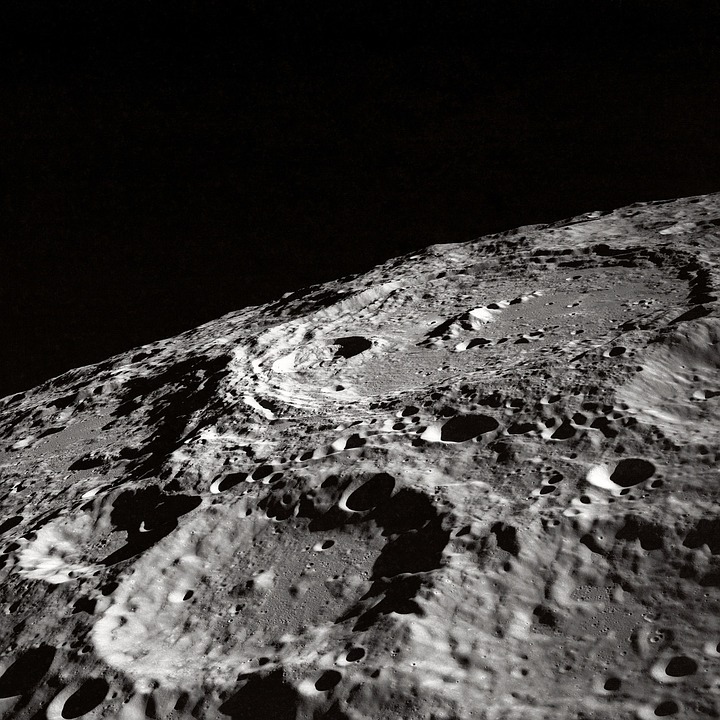Millions of years ago, the dinosaurs were driven to extinction because of a massive asteroid collision. However, it appears that it was not the first time the planet has endured that kind of event as scientists were able to find proof that the Earth and the Moon were once affected by an asteroid shower.
A study conducted by researchers from Osaka University in Japan found that hundreds of millions of years ago, the Moon and the Earth were once the target of a major asteroid shower, from 720 to 635 million years ago, long before the time of the dinosaurs. This was based on their analysis of 59 craters on the Moon that seem to suggest that it was bombarded by space rocks long ago.
Those 59 lunar craters measured at least 12 miles each, this would suggest a 62-mile wide asteroid broke apart, with its debris hitting the surfaces of the Earth and the Moon. Professor Kentaro Terada, who led the study, revealed that they also made use of images from the Terrain Camera of the Kaguya lunar orbiter of Japan’s space agency. They found that eight out of the 59 lunar craters were formed around the same time.
The researchers also found that the asteroids that once collided with the Earth likely had phosphorus, which is important in developing life. Thus, this suggests that this asteroid collision may have triggered life to form on the planet.
“Based on collision probabilities, meteorites with a total mass about 30 to 60 times the one responsible for the Chicxclub impact collided with the Earth just prior to the Cryogenian period -- approximately 720 to 635 million years ago,” said Professor Terada.
Meanwhile, on another discovery, scientists found 37 volcanic structures located in another neighboring planet, Venus. The study was published in the journal Nature Geoscience and suggests that Venus may still be geologically active due to the presence of ring-like structures called coronae, which is a result of swelling of hot molten rocks under the surface.
The researchers made use of simulations and data from NASA’s Magellan probe that once orbited Venus from 1990 to 1994 to recreate the current situation on the Venusian environment. “We are able to tell that at least 37 coronae have been very recently active,” said geophysicist Anna Gülcher of ETH Zürich in Switzerland.



 SpaceX Starship Test Flight Reaches New Heights but Ends in Setback
SpaceX Starship Test Flight Reaches New Heights but Ends in Setback  FDA Lifts REMS Requirement for CAR-T Cell Cancer Therapies
FDA Lifts REMS Requirement for CAR-T Cell Cancer Therapies  NASA Astronauts Wilmore and Williams Recover After Boeing Starliner Delay
NASA Astronauts Wilmore and Williams Recover After Boeing Starliner Delay  Neuralink Expands Brain Implant Trials with 12 Global Patients
Neuralink Expands Brain Implant Trials with 12 Global Patients  Kennedy Sets September Deadline to Uncover Autism Causes Amid Controversy
Kennedy Sets September Deadline to Uncover Autism Causes Amid Controversy  Tabletop particle accelerator could transform medicine and materials science
Tabletop particle accelerator could transform medicine and materials science  Lab-grown meat: you may find it icky, but it could drive forward medical research
Lab-grown meat: you may find it icky, but it could drive forward medical research  NASA Partners with Katalyst to Save Swift Observatory with Innovative Docking Mission
NASA Partners with Katalyst to Save Swift Observatory with Innovative Docking Mission  CDC Vaccine Review Sparks Controversy Over Thimerosal Study Citation
CDC Vaccine Review Sparks Controversy Over Thimerosal Study Citation  SpaceX’s Starship Completes 11th Test Flight, Paving Way for Moon and Mars Missions
SpaceX’s Starship Completes 11th Test Flight, Paving Way for Moon and Mars Missions  Lost in space: MethaneSat failed just as NZ was to take over mission control – here’s what we need to know now
Lost in space: MethaneSat failed just as NZ was to take over mission control – here’s what we need to know now  Ancient Mars may have had a carbon cycle − a new study suggests the red planet may have once been warmer, wetter and more favorable for life
Ancient Mars may have had a carbon cycle − a new study suggests the red planet may have once been warmer, wetter and more favorable for life  Astronomers have discovered another puzzling interstellar object − this third one is big, bright and fast
Astronomers have discovered another puzzling interstellar object − this third one is big, bright and fast 































